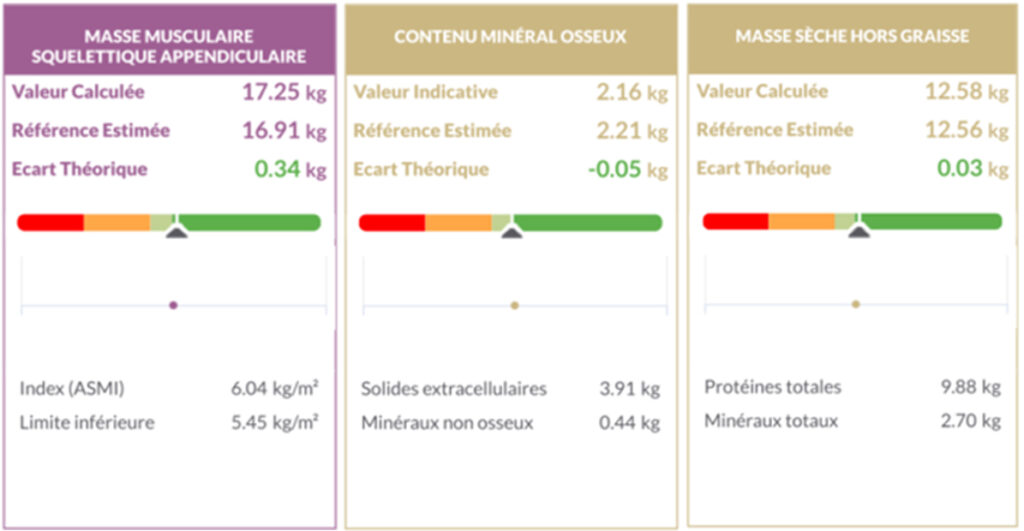(The original language of this article is French, and the graphs are shown from actual screenshots in the original language)
For several decades, the prevalence of lifestyle-related diseases such as diabetes, cancer, and cardiovascular diseases has increased significantly, representing a growing burden on various global health systems. Unlike infectious diseases, which originate from an external pathogen, lifestyle-related diseases are caused by a gradual disruption of the body’s physiological functions. Before becoming harmful, these dysfunctions are initially silent, i.e., present but asymptomatic, then noticeable, i.e., presenting symptoms but not harmful, before potentially becoming pathological. Consequently, individuals with these silent and/or noticeable dysfunctions are characterized by a state known as an intermediate health condition, placing them in significant fragility. Given this observation, it is therefore pertinent to detect these states and then regulate them through lifestyle modification to prevent the onset of chronic diseases in the medium to long term. Bioimpedance analysis constitutes a valuable tool for this purpose, and in this case study, we will show the different parameters that can be used to detect an intermediate health condition.
| Gender | Female |
| Age | 58 years |
| Height | 165 cm |
| Weight | 64,4 kg |
| BMI | 22,55 kg/m2 |
| Pathologies | None |
| Symptoms | Chronic rhinitis, poor sleep quality, and joint pain |
| Notes | Engages in regular physical activity (dancing, stretching, cycling), diet rich in vegetables but low in protein |
Quick Analysis

The quick analysis shows that at the time of measurement, this woman had hydration, muscle mass, and bone mass within health norms with a slight surplus of fat mass, 7% higher than these norms. These data suggest that she has a normal body composition for her age.

When we look at the phase angle and impedance ratio (IR), which are related to general health and inflammatory status respectively, their measured values are not associated with an optimal health condition. Indeed, for a woman of this age, a normal phase angle is greater than 5.96°, indicating that she is in a state of health with silent physiological dysfunctions. Furthermore, an IR above 0.82 for a woman signifies a systemic pro-inflammatory state, which is the case for this person as indicated by the IR value close to the threshold.
Appendicular Skeletal Muscle Mass, Bone Mineral Content, and Fat-Free Dry Mass

To detect an intermediate health state, it is useful to monitor appendicular skeletal muscle mass, i.e., the muscles of the limbs, as this can represent the individual’s ability to move and perform daily activities. In the case of this woman, we can see that she has appendicular skeletal muscle mass within the health reference range, but it is at the lower end of the normal range. This result may seem surprising considering that this person engages in significant physical activity, but it is also necessary to consider the type of physical activity. In this specific case, they are not activities that particularly stimulate skeletal muscle for potential hypertrophy. Additionally, her protein intake appears insufficient to allow for the development or even maintenance of muscle mass, and considering her age, she is at high risk of sarcopenia during aging.
It is also useful to monitor bone mineral content to assess the mineralization of the skeleton and thus detect potential osteopenia or whether it is sufficient to compensate for physiological events that may lead to demineralization, i.e., whether the individual has an adequate “reserve.” Here, we can also observe that this woman has bone mineral content at the lower end of the health reference range, suggesting that she may be at significant risk of osteopenia in the future.
Since these two tissues are hydrated, their slightly low values can also be explained by the slight dehydration of this person (-700 mL). In this case, it is important to monitor fat-free dry mass, as it is composed solely of the proteins and minerals contained in the human body, mainly in the muscles and bones. We can observe that this woman’s fat-free dry mass is also slightly above the lower end of the health reference range, indicating that she has a satisfactory amount of proteins and minerals for her age, but it may not be sufficient to compensate for potential rapid pathological imbalances.
Fat Mass

A significant surplus of fat mass causes some lifestyle-related diseases, such as diabetes, metabolic syndromes, or cardiovascular diseases, making it essential to monitor this parameter to evaluate if it might pose a risk in the medium to long term. In this case, the fat mass percentage of this woman is slightly higher than the health reference, which is confirmed by a 1.22 kg surplus compared to the reference. Considering this patient’s physical activity and her diet, which is mainly composed of vegetables, she does not seem to have a lifestyle that promotes fat mass gain, and therefore her surplus would not constitute a problem.
Conclusion
As shown in this case study, although this person’s body composition appears normal at first glance, a more in-depth analysis of the results shows that she is indeed in an intermediate health state. The phase angle and IR values indicate a systemic pro-inflammatory state and a state of vulnerability for this person. Additionally, her appendicular skeletal muscle mass and bone mineral content are very close to the lower limit of health values, making her more vulnerable to pathological changes in these compartments.
To prevent these changes, it would be beneficial for this person to gain muscle mass and bone mass through appropriate physical activity and diet, which would help reduce her pro-inflammatory state.

